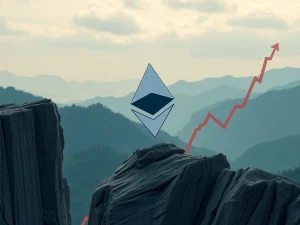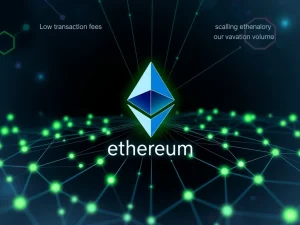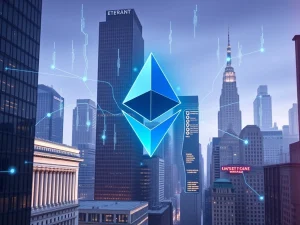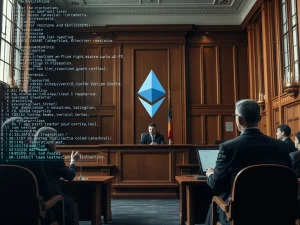Urgent Debate: Solana Co-founder Challenges Ethereum L2 Security Claims
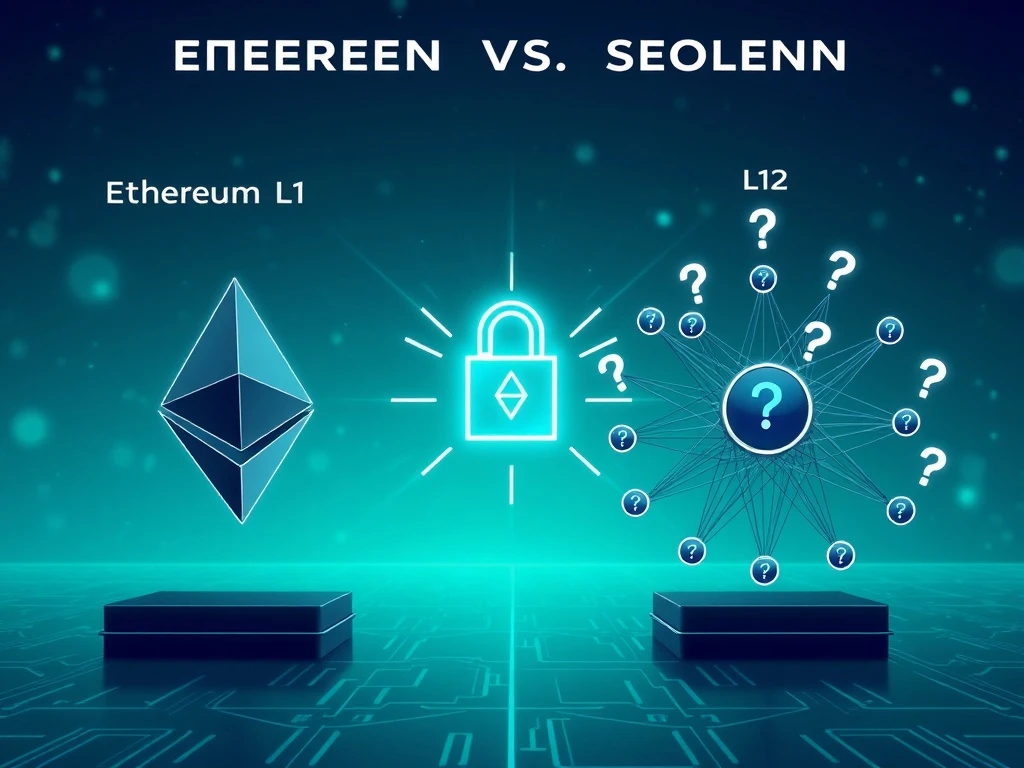
The landscape of blockchain technology constantly evolves. However, this evolution often brings crucial debates about fundamental principles like security and decentralization. A significant discussion recently ignited within the crypto community. Specifically, **Solana co-founder Anatoly Yakovenko** cast serious doubt on the prevailing narrative surrounding Ethereum’s scaling solutions. His remarks have sparked an **urgent debate** regarding **Ethereum L2 security** and its implications for the broader ecosystem. Therefore, understanding these arguments becomes paramount for investors and developers alike.
Unpacking Concerns: Ethereum L2 Security Under Scrutiny
Anatoly Yakovenko, a prominent figure in the blockchain space, did not mince words during a recent discussion. He asserted that the claim of Layer-2 (L2) networks inheriting Ethereum’s Layer-1 (L1) security is fundamentally flawed. This statement directly challenges a core tenet often cited by L2 proponents. Yakovenko highlighted several critical vulnerabilities inherent in current L2 designs. He suggested that these issues compromise the overall integrity of the Ethereum ecosystem. Consequently, his comments have forced a re-evaluation of how L2s are perceived.
Yakovenko’s criticisms center on several key areas:
- Vast Attack Surface: Layer-2 networks possess extensive codebases. This complexity creates a larger attack surface, making them more susceptible to exploits.
- Auditing Challenges: The sheer size of L2 codebases makes comprehensive security audits incredibly difficult, if not impossible. Unidentified software bugs could pose significant risks.
- Multi-Signature Custody Risks: Many L2s rely on multi-signature wallets for user fund custody. This design, Yakovenko argues, allows funds to be moved without explicit user consent in certain scenarios.
Furthermore, Yakovenko drew a direct comparison. He noted, “5 years into the L2 roadmap, wormhole ETH on Solana has the same worst-case risks as ETH on base and generates as much revenue for ETH L1 stakers. It’s wrong no matter how you slice it.” This comparison underscores his belief that the security assurances for L2s are overstated. Ultimately, this perspective fuels the ongoing **Layer-2 networks debate**.
The Broader Layer-2 Networks Debate: Are There Too Many?
The proliferation of Ethereum’s Layer-2 networks has been rapid. According to L2Beat, 129 verified Ethereum L2 networks exist today. Another 29 scaling networks await review. This growth has sparked a lively discussion within the industry. Some experts question whether such a high number of L2s is beneficial or detrimental to Ethereum’s long-term health. Adrian Brink, co-founder of Anoma, a Layer-1 protocol, believes the industry has approximately ten times more L2s than it truly needs. He suggests that this oversupply could lead to various issues.
Conversely, other industry leaders welcome the surge in L2s. Igor Mandrigin, co-founder of Web3 infrastructure provider Gateway.fm, argues that ‘there can never be too many L2s.’ He views the explosion of these networks as a healthy sign. It signals robust network growth and increased diversity within the Ethereum ecosystem. Anurag Arjun, co-founder of Avail and the Polygon Layer-2 network, concurs. He told Crypto News Insights that each Ethereum L2 acts as a high-throughput blockchain. This gives Ethereum a multitude of powerful scaling options. These diverse viewpoints highlight the complexity of the **Layer-2 networks debate**.

ETH Security Concerns: Revenue Cannibalization and Liquidity Fragmentation
While some see L2 growth as positive, others point to potential drawbacks impacting **ETH security concerns** and economic viability. Binance Research, for example, has raised alarms about revenue cannibalization. These networks, they argue, are fragmenting liquidity. They are also eating into the revenue generated by the Ethereum base layer. This occurs because L2s offer significantly lower transaction fees compared to transacting directly on the Layer-1 blockchain. Consequently, users are incentivized to move off the mainnet, impacting L1’s fee generation.
The fragmentation of liquidity presents another significant challenge. When assets are spread across numerous L2s, the overall liquidity of the ecosystem becomes diluted. This can lead to less efficient markets and potentially higher slippage for large trades. Moreover, managing assets across multiple L2s adds complexity for users. It also introduces new points of failure. The debate extends beyond mere technicalities. It delves into the economic incentives and structural integrity of the entire Ethereum architecture. Therefore, the implications for **ETH security concerns** are multifaceted, encompassing both technical vulnerabilities and economic sustainability.
The Future of Blockchain Decentralization Amidst L2 Expansion
The discussion around L2s inevitably touches upon **blockchain decentralization**. Yakovenko’s critique directly questions whether current L2 implementations truly uphold the decentralized ethos of Ethereum. If L2s introduce centralized points of control, such as multi-signature schemes controlled by a few entities, then the very essence of decentralization is compromised. This becomes a critical point of contention. The promise of L2s is to scale Ethereum without sacrificing its core principles. However, if security and decentralization are indeed being eroded, the long-term vision for Ethereum faces significant hurdles.
The ongoing dialogue between proponents and critics of L2s is vital. It forces the industry to critically examine the trade-offs involved in scaling solutions. Ultimately, the goal remains to achieve high transaction throughput while maintaining robust security and a decentralized network. The insights provided by figures like **Solana co-founder Anatoly Yakovenko** serve as a necessary check. They encourage rigorous scrutiny of new technologies. This ensures that innovation does not inadvertently undermine foundational principles. The crypto community must continue to address these complex questions. Only then can it build a more secure and truly decentralized future.

